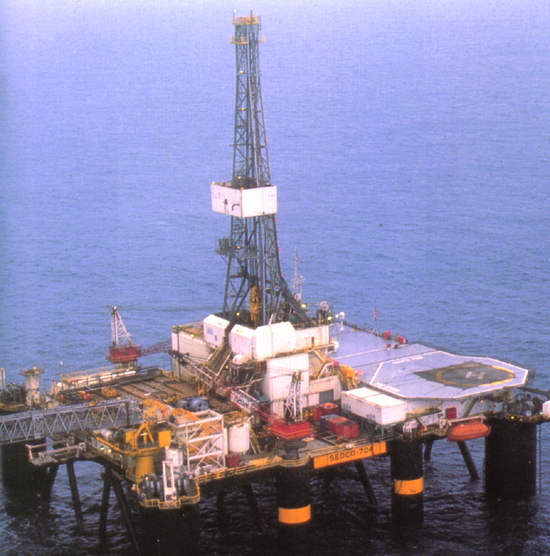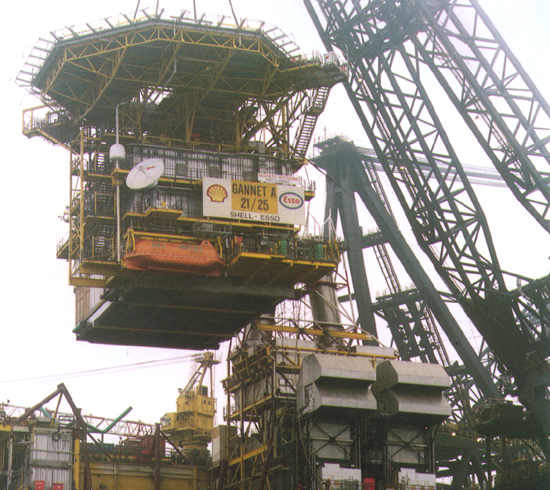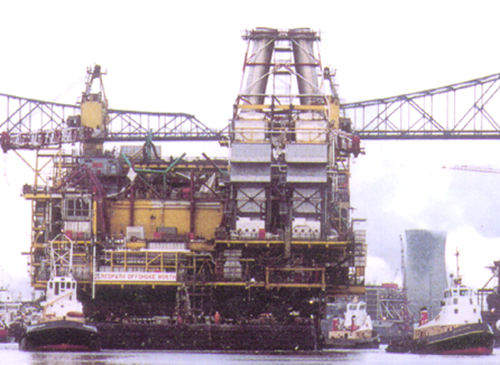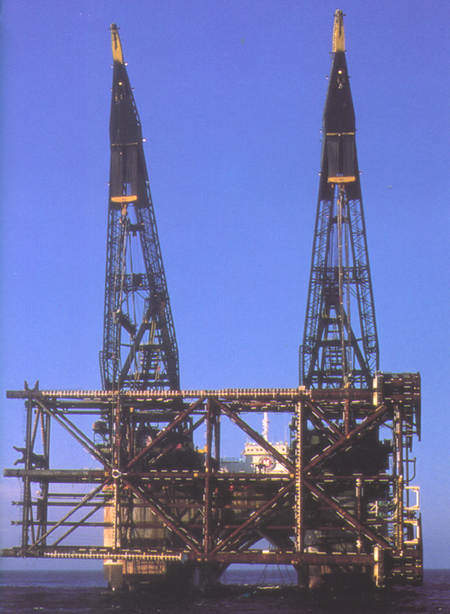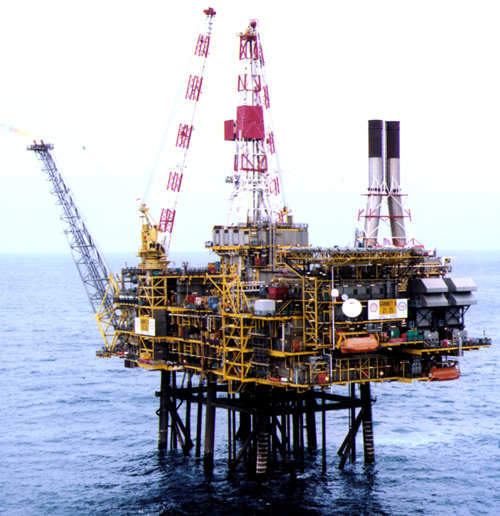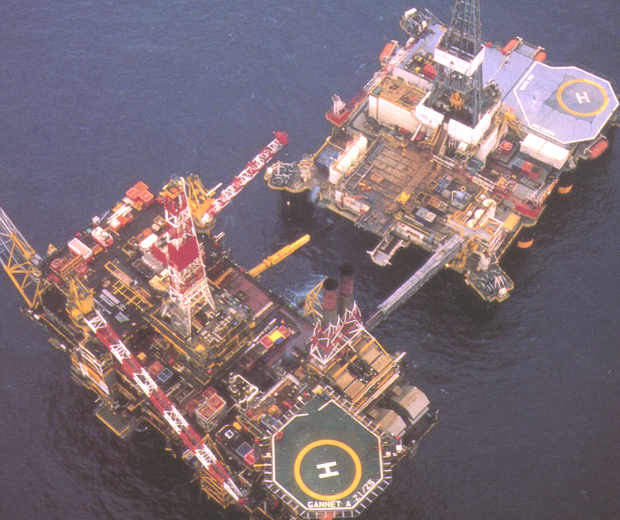Since the original field was first discovered in 1973, a number of satellite fields have been tied into the Gannet facilities. In mid-1999, the latest phase saw Gannet G going into production with a £40m project.
Gannet lies in Central North Sea, 180km east of Aberdeen, in block numbers 21/25, 21/30, 22/21 and 22/26a, at a water depth of 95m. The field is half-owned by Shell, the operator (50%) and partly by Esso (50%).
Gannet field reservoirs
The reservoir lies at a depth of between 1,768m and 2,728m. It consists of good-quality tubiditic sands of a Tertiary age (Tay, Rogaland, Forties, Lista and Andrew Formations).
The development plan is based on the subsea satellites Gannet B, C, D, E, F and G, which are tied into a centrally placed fixed-production platform at Gannet A. This platform processes the oil and gas from all of the reservoirs.
Gannet A is a low-relief NW/SE trending anticline, which is 9km long and 4km wide. It consists of a 15m oil leg, overlain by a gas cap and it contains 68 million barrels of oil and condensate, along with 411 billion ft³ of gas from 11 wells.
Gannet B is a gas field 5km north-west of Gannet A. It has two subsea wells, producing via individual 150mm pipelines running to the platform. It contains three million barrels of oil and 139 billion ft³ gas.
Gannet C, 5km south-west of Gannet A, has a thin oil rim and a gascap. To develop it, six horizontal oil wells and two gas wells are required, each serviced by 100mm pipelines running to the platform. It contains 60 billion barrels oil and 140 billion cubic feet of gas.
Gannet D is an oil field 16km north-east of Gannet A. Production is from five wells and oil is transported to the platform through a subsea manifold and two 150mm pipelines. The field has a total of 31 million barrels of oil and 30 billion ft³ of gas.
Gannet E lies 14km away from Gannet A. It contains 23 million barrels of relatively thick heavy crude and produces at a rate of 14,000bbl/day at peak production. Production life is nine years.
Its distance from the mother platform has required the remote deployment of an electrical submersible pump, from Reda Production Services. It was the world’s longest tieback of an ESP at that time.
Gannet F lies 11km away from Gannet A. It contains 19 million barrels of much lighter oil and produces at a rate of 18,000 barrels/day. The field life is approximately 14 years.
All oil wells have an in-built gas-lift facility to enhance oil recovery, should it prove necessary. The gas will be supplied by individual pipelines from the platform.
Gannet E and F were developed at a cost of £80 million. The wells were drilled using the Sedco 704. The two wells share a common pipelines system.
In February 2013, Technip received an engineering, procurement, installation and construction (EPIC) contract for the Gannet F reinstatement project.
The contract includes the replacement of the Gannet F flow-line, fabrication and laying of an 11.8km pipe-in-pipe, and installation of a gas lift pipeline and an 11.9km umbilical.
Gannet G field has recoverable reserves of 13 million oil equivalent barrels. It is producing at an initial rate of 7,500 barrels of oil per day. The £40m project consists of two new wells, routed via a 5km pipeline to the Gannet platform for processing.
Processing platform
The substructure is a four-leg, lift-installed steel-jacket at a water depth of 95m. Fabricated on specially constructed skid shoes, enabling it to be skidded onto a floating barge, the jacket has a lift weight of 8,400t. Each leg has three vertical piles, 2,438mm in diameter, each weighing 400t. Pile penetration is approximately 85m, due to poor strength soils in the upper 40m of the soil column. Six stab-in points support the integrated deck.
In addition to the loads associated with the 100-year return period storm, the jacket has been designed to support a topsides load of 16,000t and a total of 39 pipeline risers.
The design, fabrication and installation of the substructure were covered by a single EPIC contract, awarded to RGC Offshore, at Methil.
The accommodation unit has a normal capacity of 39 people.
The topsides were designed by AMEC Engineering and fabricated by Redpath Offshore North.

